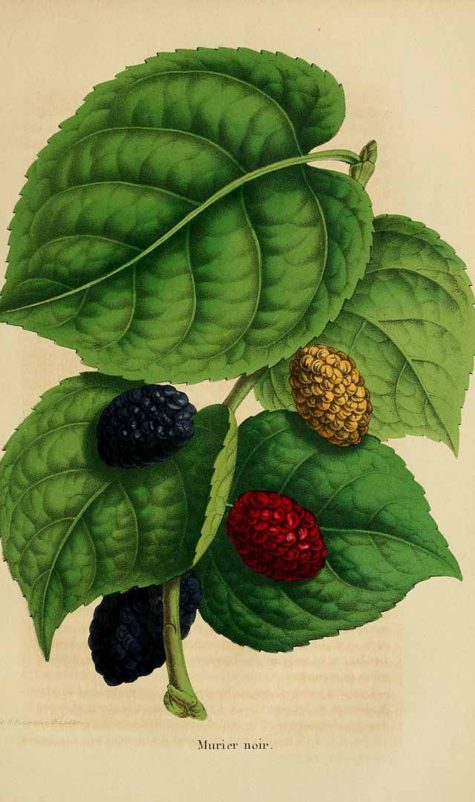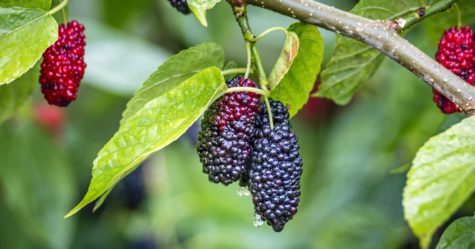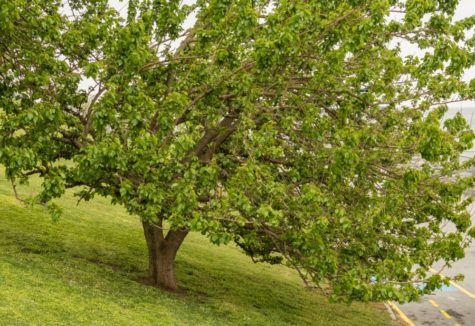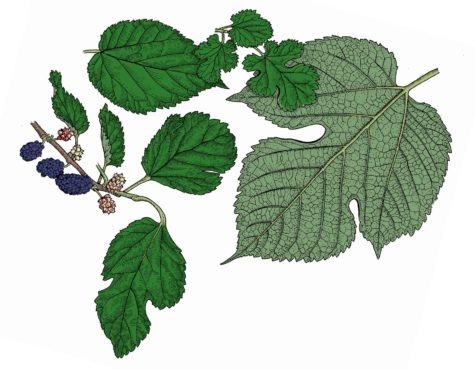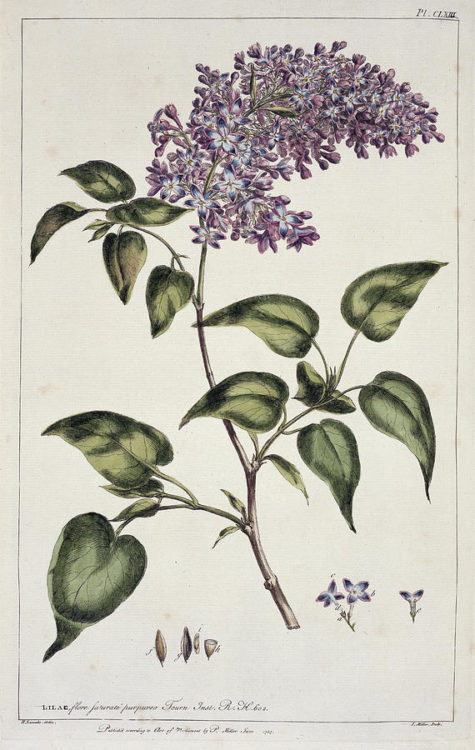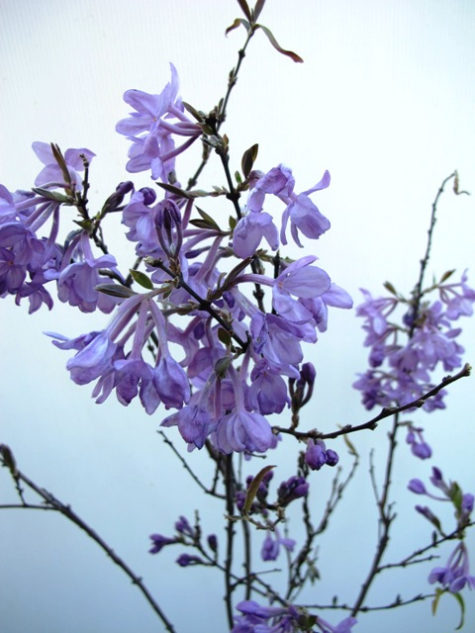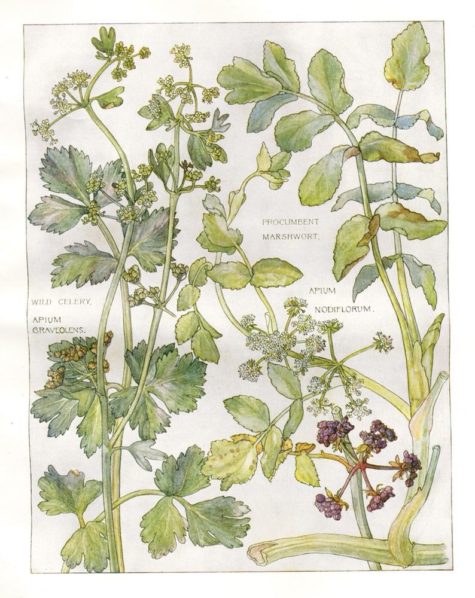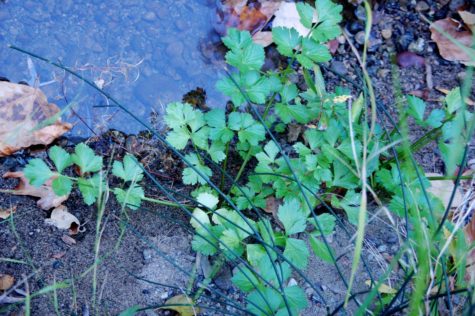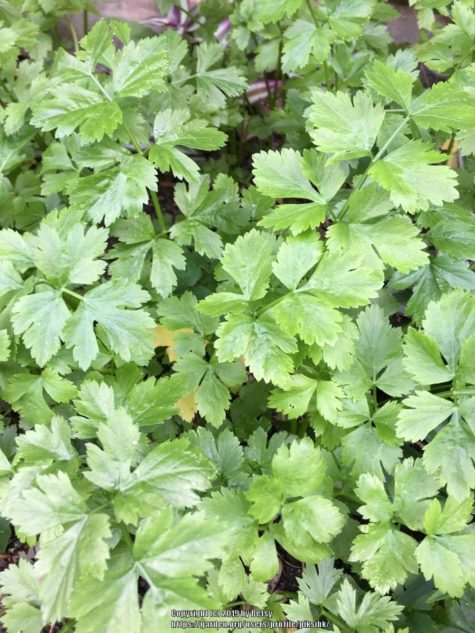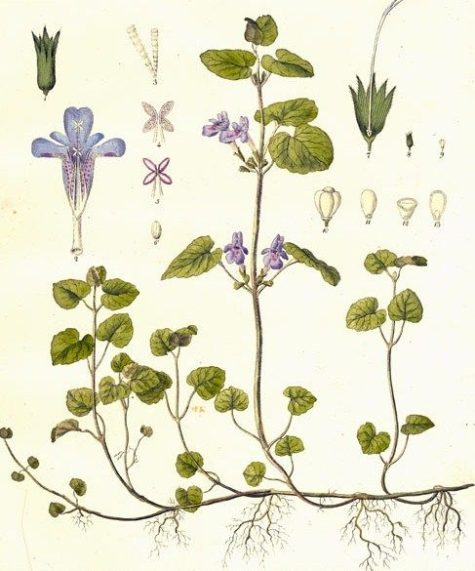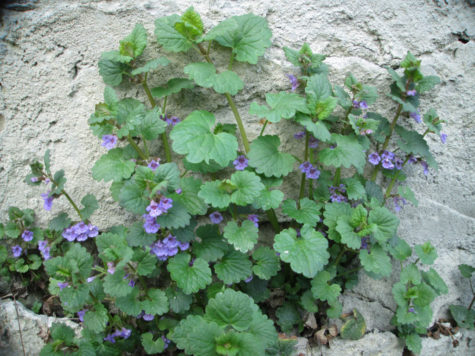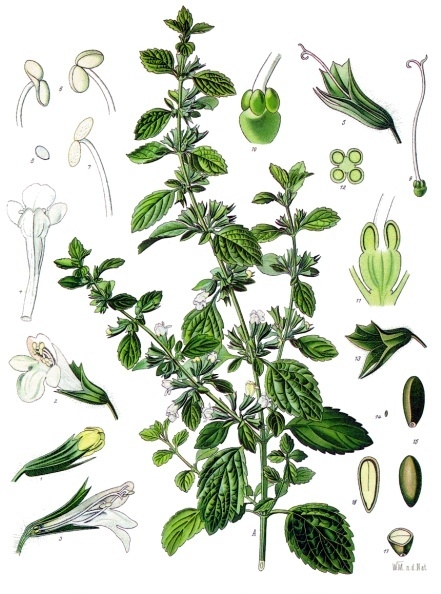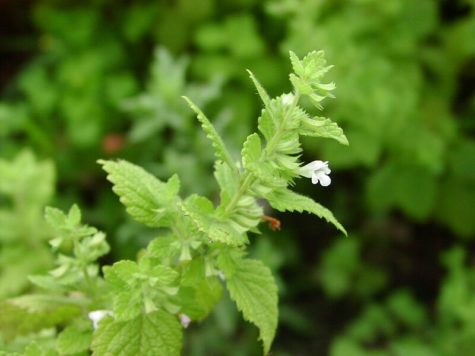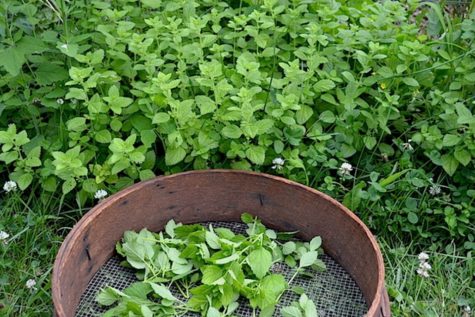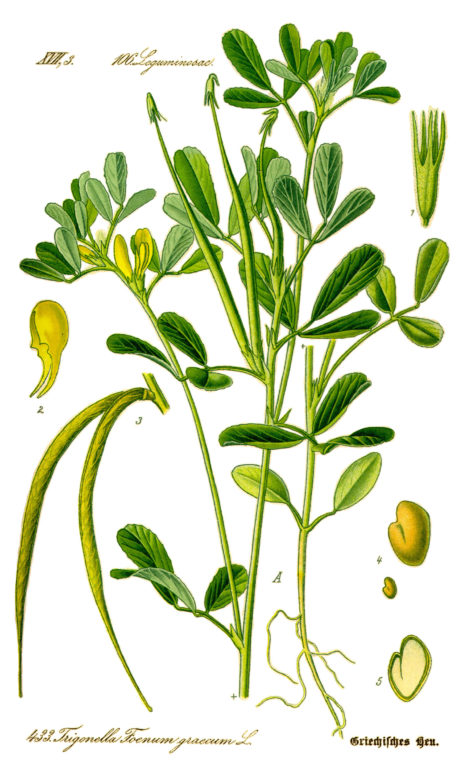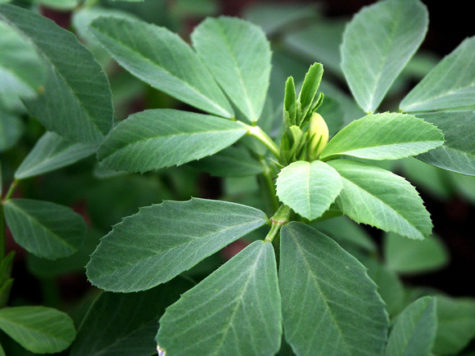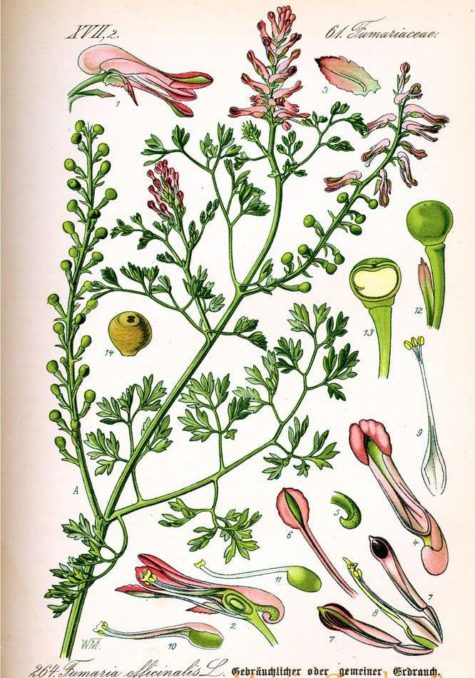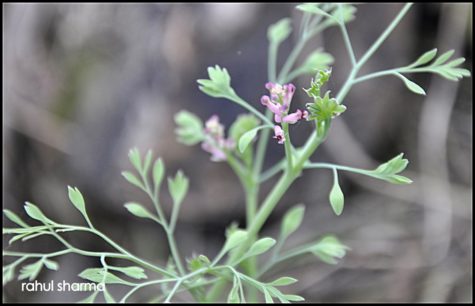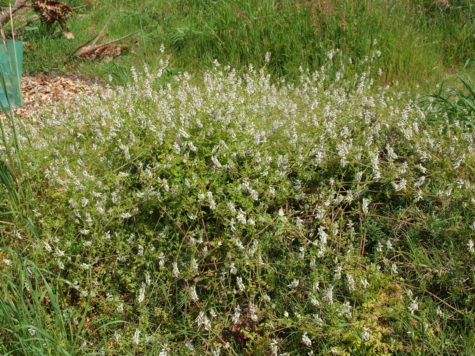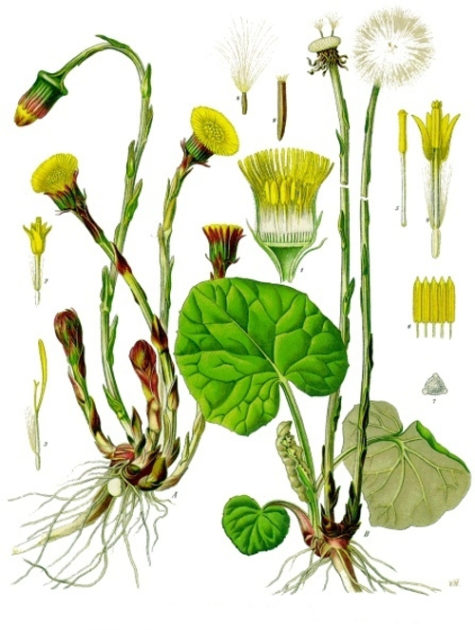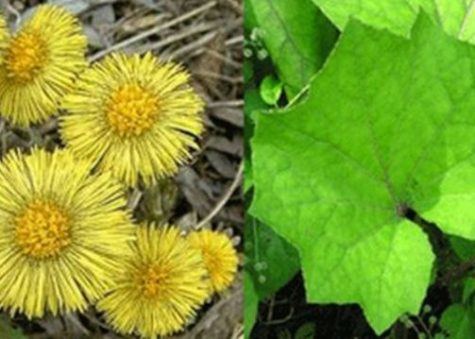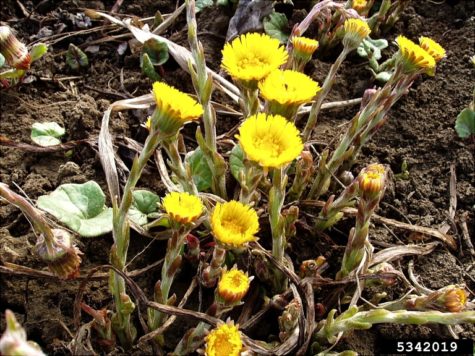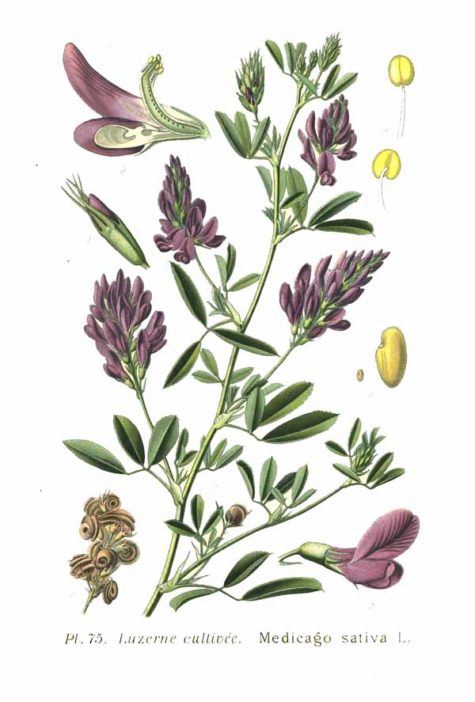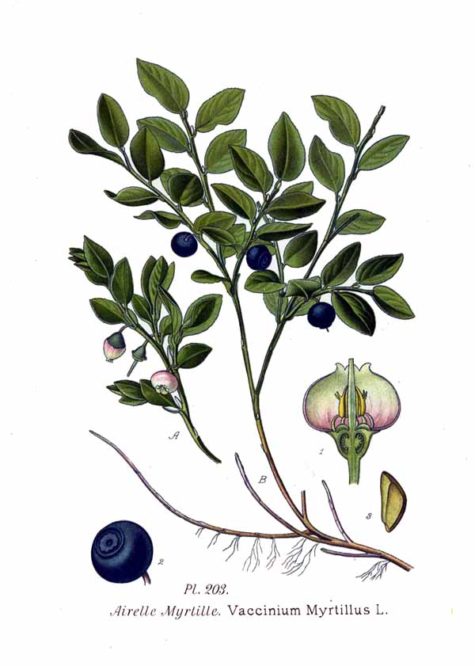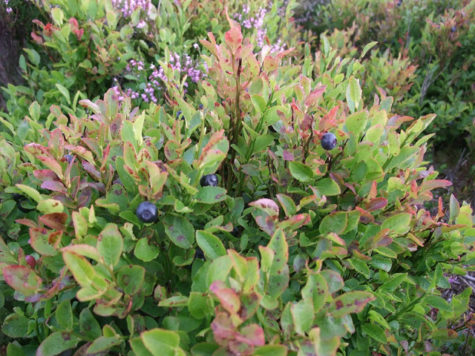Tonic
Mulberry
- Scientific Name: Morus nigra, Morus alba
- Plant Family: N.O. Artocapaceae
- Parts Used: Fruit, Bark and Root Bark
- Actions: Fruit – Antioxidant, Tonic, Laxative, Antidiabetic : Bark – Anthelmintic,
Black Mulberry is used as a laxative and to treat runny nose (rhinitis). A molasses made from black Mulberry is used for inflamed mouth sores during cancer treatment. Black Mulberry fruit also contains pectin, which might act as a laxative to help stool pass through the bowels.
Especially wholesome for those who are liable to heartburn, because it does not undergo acetous fermentation in the stomach. In France Mulberries are served at the beginning of a meal. Among the Romans the fruit was famous for maladies of the throat and windpipe.
The powdered leaves of the White Mulberry are most commonly used for medicine. The fruit can be used for food, either raw or cooked. The white Mulberry is sweet but bland, unlike the more intense flavor of the red Mulberry and black Mulberry.
White Mulberry is often tried in order to help treat diabetes. It is also tried for treating high cholesterol levels, high blood pressure, the common cold and its symptoms, muscle and joint pain such as from arthritis, constipation, dizziness, ringing in the ears, hair loss, and premature graying.
White Mulberry is native to China and is the food of silkworms. It was introduced into the United States in colonial times, during an attempt to establish a silk industry.
According to Chinese Medicine, Mulberry has a cooling thermal nature, sweet flavor, and builds the yin fluids and blood. It moistens the lungs and gastrointestinal tract, strengthens the liver and kidneys; treats wind conditions, including vertigo and paralysis.
Beneficial for blood deficiency signs such as anemia, prematurely gray hair, irritability, insomnia, and constipation from fluid dryness. It is also used in treating stomach ulcers, diabetes, dry cough, ringing in the ears and poor joint mobility.
At one time in the West, Mulberries were highly regarded as a general tonic for the whole system, which corresponds to some degree with the Chinese view of their tonic action on the kidneys, liver, and blood.
Mulberries are refreshing and have laxative properties and are well adapted to febrile cases. In former days, they used to be made into various conserves and drinks.
Mulberry was most often used for the preparation of a syrup, and is employed to flavor or color any other medicine. Syrupus Mori is a dark violet or purple liquid, with a faint odor and a refreshing, acid, saccharine taste. In amount of natural fruit sugar, the Mulberry is surpassed only by the Cherry and the Grape.
Mulberries are sometimes used in Devonshire for mixing with cider during fermentation, giving a pleasant taste and deep red color. In Greece, also, the fruit is subjected to fermentation, thereby furnishing an inebriating beverage.
Mulberries are full of nutrients and vitamins. A cup of raw Mulberries contains only 60 calories, making them a light and tasty snack, yet providing the nutrients necessary for the body.
Mulberries contain carbohydrates that convert sugar into glucose, thereby providing energy to the cells. Consuming Mulberries increases your iron intake and ensures ample supply of oxygen to the tissues.
Mulberries are rich in Vitamin K and C. Vitamin C increases tissue strength and boosts collagen synthesis. Vitamin K helps in bone tissue development and is an essential component for blood clotting.
They also contain Riboflavin (also known as B-2), which protects your tissues from free radicals and helps in transferring oxygen throughout the body.
Consuming any form of the Mulberry fruit – whether the fruit itself, its powder, or juice – is beneficial to you. You can even apply Mulberry extracts on your skin.
Appearance
The Common Mulberry is a handsome tree, 20 to 30 feet high, of rugged, picturesque appearance, forming a dense, spreading head of branches usually wider than the height of the tree, springing from a short, rough trunk.
Mulberries are related to figs and breadfruit. Technically, Mulberries are not single berries. Each Mulberry is a collection of berries on a common pulpy receptacle.
There are few trees better able to withstand the debilitating effects of the close atmosphere of small town gardens. Varieties include:
- White Mulberry (Morus alba) native to east Asia.
- Red Mulberry (Morus rubra) native to North America.
- Black Mulberry (Morus nigra) native to southwest Asia.
- Texas Mulberry (Morus microphylla) native to the United States and Mexico.
- Chinese Mulberry (Morus australis) native to the Southeast Asia.
- African Mulberry (Morus mesozygia) native to south and central Africa.
- French Mulberry (Callicarpa Americana) – a shrub 3 to 6 feet high, with bluish flowers and violet fruit, but the species is too tender for any but the mildest parts of Great Britain.
It is by no means unusual for a Mulberry tree to produce leaves of several different shapes, or differing considerably in outline.
The Chinese White Mulberry, cultivated in other countries as food for the silkworm, is even more variable in leafage than the Common Mulberry, and quite a score of different forms of leaf have been gathered from a single tree, and several from one shoot.
Both species contain in every part a milky juice, which will coagulate into a sort of Indian rubber. This has been thought to give tenacity to the filament spun by the silkworm.
While definitely helpful, Mulberry trees are notorious for their pollen production, which can well exceed the admissible count of 1500 in the spring season. It was precisely for this reason that the city administration of Tucson, Arizona, banned it in 1984. The city of Las Vegas, Nevada, followed suit citing the same reason in 1991, and El Paso, Texas, followed a year later in 1992. While some of these cities are contemplating doing away with this ban, that is bound to take some time as the risk involved in pretty high. Continue reading
Lilac
- Scientific name: Syringa vulgaris
- Plant Family: Oleaceae
- Parts Used: Leaves, flowers, fruit
- Medicinal Actions: Vermifuge, Tonic, Febrifuge, Astringent, Aromatic
Medicinal uses are a gray area when it comes to just the flower. Most resources that I have found list that the medicinal benefits of Lilac come from the leaves and fruit.
Lilacs are edible. They symbolize first love and are said to drive away ghosts. They have long been used in both the Eastern and Western healing traditions to fight fevers, treat coughs and calm the stomach. Lilacs are also used by the cosmetic industry for their aromatic and calming effects.
Apparently used as a tea or infusion historically it has been used as a anti-periodic. Anti-periodic basically means that it stops the recurrence of disease such as malaria. There has been some studies that indicate a febrifuge action which may help bring down fever.
Lilac flowers have astringent, aromatic, and perhaps a little bitter qualities. Astringents tighten, draw, and dry tissues such as skin. So a wonderful application would be a cold or warm infusion to use as a toner on the face. Or using the same method but apply to rashes, cuts, and other skin ailments.
An aromatic action causes irritation to the place that it is touching (think GI tract) and irritation brings blood flow and blood flow equals healing! Eating the flowers raw may help with gastric issues such as flatulence or constipation.
In aromatherapy the fragrance of Lilacs is recommended to patients who suffer from chronic depression and anxiety. Lilac blossoms can be added to your bath for a soothing aromatherapy remedy for stress and anxiety.
Synthetic Lilac oil is commonly used in commercial perfumes. however making an herbal infused oil may be a great way to capture the aromatics for healing purposes (see recipe below). It is also wonderfully fragrant. Lilac oil can be applied to the skin for the treatment of various skin problems as rashes, burns and wounds. May also be used as a substitute for Aloes and in the treatment of malaria.
The flowers are edible and have some medicinal qualities. I have to say eating even a single flower raw is a flavor exploding experience with slight astringency (drying to tissues), almost bitter, and very floral. I would say these are best for garnishes and edible flower displays on pastries rather than whole meals.
The plant is administered in the form of herbal tea (a quantity of dried flowers in boiled water, 2-3 times a day). Chewing the leaves is recommended for its astringent action and to improve the sore throat. Folk medicine also recommends chewing the leaves for dyspepsia, flatulence, diarrhea and rheumatism. The herbal tea is used against helminths, malaria, sore throat and fever.
Lilacs were used in Colonial America as a vermifuge (treat intestinal worms), to reduce fevers and to treat malaria. Lilacs steeped in warm spring water for 30 minutes, strained, bottled and refrigerated can be used on the face as a tonic and as a healing spritz for some facial afflictions.
Lilacs have been used to treat diphtheria (both internally and as a gargle). Lilac tea can be used as a hair tonic. Michael Moore indicates that the California Lilac is:
“An excellent home remedy for menstrual cramps, nosebleeds, bleeding hemorrhoids, and old ulcers as well as capillary ruptures from coughing or vomiting.
California Lilac roots are harvested in the late fall when the color is darkest or in early spring before the plants flower. The plants are tough and wiry, the roots even more so, so harvest them while the roots are fresh as after drying, you may need a jack hammer.”
Lilacs steeped in warm spring water for 30 minutes, strained, bottled and refrigerated can be used on the face as a tonic and as a healing spritz for some facial afflictions.
- Lilac Infusion
Pour 2 1/2 cups boiling water over 2 cups (packed) of Lilac flowers, cover and allow to cool. Allow the infusion to sit 8 hours, or overnight. Strain the flowers from the liquid using a coffee filter, you should have about 2 1/4 c. liquid.
Lilac blossoms are natural astringents–they dry things out. Place a cup or two of slightly wilted flowers in a jar, and fill with witch hazel. Allow it to steep for a few days, and then strain out the flowers. Use the Lilac and witch hazel blend as a facial toner, to keep your skin looking healthy and fresh all summer.
Important Note:
There are two other plants that can sometimes be confused with the Lilac. Syringa Baccifera is a synonym of Mitchella repens or Partridge Berry and MUST NOT be confused with Syringa vulgaris.
Also, in Chinese Medicine, there is a plant called Lilac Daphne,(yuán huā). This plant must be used with care and only by experienced herbalists, as parts of it are poisonous. Much of the confusion with those two plants come from the similarity of names. However the Lilac Daphne looks very similar as you can see in the image above. Continue reading
Wild Celery
- Scientific Name: Apium graveolens
- Plant Family: Umbelliferae
- Parts Used: Ripe seeds, Herb, Root
- Odor: Characteristic and agreeable.
- Taste: Aromatic, warm, and slightly pungent.
- Actions: Carminative, Stimulant, Diuretic, Tonic, Nervine.
See also: Celery
Wild Celery was used to crown the victors of the Greek Nimean games, held to honor Zeus. The pragmatic and epicurean Romans, meanwhile, exploited the herb’s culinary properties; the leaves, mixed with dates and pine kernels, made a standard stuffing for suckling pig during the empire.
In herbal medicine, Wild Celery is useful in hysteria, promoting restfulness and sleep, and diffusing through the system a mild sustaining influence.
Note:
Wild Celery is a common name for several plants. It can also refer to:
- Angelica (archangelica) cultivated as a vegetable and medicinal plant
- Lovage, (Levisticum officinale) sometimes known as wild Celery
- Radhuni or Ajmod (Trachyspermum roxburghianum) a plant used as a spice in South and Southeast Asia
- Water Celery or Eel grass (Vallisneria americana) an aquatic plant in the family Hydrocharitaceae
In this article, we are exploring the wild growing forms of Celery, Apium graveolens. This is the original and wild version of the commonly known cultivated kitchen and supermarket Celery. There is a bunch of information on the cultivated variety here: Celery.
Medicinal Uses:
Wild and cultivated Celery can be used interchangeably, see also this in-depth information on the cultivated variety of Celery.
Celery is good combined with Scutellaria for nervous cases with loss of tone. On this account it is recommended to eat the fresh root of the Cultivated variety, as well as taking the oil or fluid extract.
It is said to be very good for rheumatism, when it is often combined with Damiana.
- Dose: Fluid extract, 3 to 7 drops every four hours.
Prior to the 16th century, the Celery plant was used more as a medicine than a food. Celery seeds, leaves, stem, and root are used in a variety of traditional medicine systems, including the Unani tradition of ancient Persia and Arabia, Indian Ayurveda, and Chinese herbal medicine. As an herbal preparation, Celery seeds were consumed fresh or as a water decoction, or the seed powder or extracts were used. Continue reading
Ground Ivy
- Scientific Name: Glechoma hederacea
- Plant Family: Lamiaceae
- Parts Used: Leaves, stems, and flowers
- Actions: Expectorant, Astringent, Diuretic, Tonic, a gentle Stimulant, Anti-catarrhal, Vulnerary
General Overview:
Ground Ivy is an aromatic, perennial, evergreen creeper of the mint family. This little plant grows on waste ground and in hedgerows everywhere, the leaves are dark and kidney shaped and the flowers bright dark blue. The Romanies made a tea from Ground Ivy flowers and wood sage as a cure for fevers and colds. The herb is used by herbalists in the treatment of blood and kidney disorders.
The leaves are downy, dark green and kidney-shaped, with glands that contain an aromatic, bitter oil. The tiny deep-throated flowers are purple or blue.
Some people consider Ground Ivy to be an attractive garden plant, and it is grown in pots and occasionally as a groundcover. Easily cultivated, it grows well in shaded places. A variegated variety is commercially available; in many areas this is the dominant form which has escaped cultivation and become established as an aggressive, adventitious groundcover.
Note:
Ground Ivy is sometimes confused with common mallow (Malva neglecta), which also has round, lobed leaves; but mallow leaves are attached to the stem at the back of a rounded leaf, where Ground Ivy has square stems and leaves which are attached in the center of the leaf, more prominent rounded lobes on their edges, attach to the stems in an opposite arrangement, and have a hairy upper surface.
In addition, mallow and other creeping plants sometimes confused with Ground Ivy do not spread from nodes on stems. In addition, Ground Ivy emits a distinctive odor when damaged, being a member of the mint family.
The Basics:
Ground Ivy has been used in the traditional medicine of Europe going back thousands of years: Galen recommends the plant to treat inflammation of the eyes. John Gerard, an English herbalist, recommended it to treat tinnitus, as well as a “diuretic, astringent, tonic and gentle stimulant. Useful in kidney diseases and for indigestion.” It has also been used as a “lung herb.”
Its presence as an invasive weed in North America is the result of the value placed on it by European settlers as a medicinal herb and ale preservative; the species was imported and widely cultivated in herb and kitchen gardens.
Other traditional uses include as an expectorant, astringent, and to treat bronchitis. In the traditional Austrian medicine the herb has been prescribed for internal application as salad or tea for the treatment of a variety of different conditions including disorders associated with the liver and bile, gastrointestinal tract, respiratory tract, kidneys and urinary tract, fever, and flu.
An ancient ale herb, bitter Ground Ivy was used to clear and flavor ale before the introduction of hops.
Continue reading
Lemon Balm
- Scientific Name: Melissa officinalis
- Plant Family: Laviatae
- Parts Used: Leaves – fresh or dried
- Actions: Carminative, Anti-spasmotic, Anti-depressive, Diaphoretic, Hypotensive, Anti-emetic, Hepatic, Nervine, Tonic
- Constituents: Rich in essential oil containing citral, citronellal, geraniol and lindol; bitter principles, flavones, resin.
- How does it work? Lemon balm contains chemicals that seem to have a sedative, calming effect. It might also reduce the growth of some viruses.
General Overview:
A member of the mint family, lemon balm is considered a “calming” herb. It has been used for centuries to help heal wounds, treat venomous insect bites and stings, induce relaxation and a sense of well being, improve appetite and aid digestion. Lemon balm, known and named for its fresh, lemony scent, has long been used as a culinary, cosmetic and medicinal and magical herb.
Note: Lemon Balm, though often called Bee Balm, should not be confused with another plant commonly called Bee Balm (Mondara dydima).
The botanical name, melissa, is Greek for “bee”. Lemon balm has been cultivated in the Mediterranean region for about 2000 years. The Muslim herbalist Avicenna recommended lemon balm “to make the heart merry”. Paracelsus claimed this herb could completely revitalize the body and called it the “elixir of life”, and 14th century French King Charles V drank its tea every day to keep his health.
Lemon balm is used for digestive problems, including upset stomach, bloating, intestinal gas (flatulence), vomiting, and colic; for pain, including menstrual cramps, headache and toothache; and for mental disorders, including hysteria and melancholia.
Lemon balm is excellent for treating anxiety and battling some hard-to-treat viruses. The list of symptoms from anxiety is vast but melissa tackles them all bravely. It is equally fearless when it comes to taking on viruses as daunting as Mono and Herpes. This is an herb every healer wants in the medicine cabinet.
In Ayruvedic medicine, Lemon Balm’s energy is pungent, sour-sweet, cool, and wet. Crushed leaves rubbed on the skin in the garden helps keep away bugs.
Many people believe lemon balm has calming effects so they take it for anxiety, sleep problems, and restlessness. Lemon balm is also used for Alzheimer’s disease, attention deficit-hyperactivity disorder (ADHD), an autoimmune disease involving the thyroid (Graves’ disease), swollen airways, rapid heartbeat due to nervousness, high blood pressure, sores, tumors, and insect bites.
Lemon balm is inhaled as aromatherapy for Alzheimer’s disease. Some people apply lemon balm to their skin to treat cold sores (herpes labialis).
Description:
A familiar garden plant with its fresh, green, nettle shaped leaves and strong bushy growth, lemon balm is native to southern Europe and was probably introduced to the north by the Romans. The creamy flowers are undistinguished and grow in loose clusters from midsummer. The hardy root is perennial.
Lemon balm has the square stems indicative of the mint family with green, oval, finely toothed leaves that grow opposite each other on the stem. The leaves also have fine hairs that capture morning dew and helps keep the plant moist. Flowers are small and yellow to white depending on soil type. It can vary in height between 12 inches to well over 3 feet.
Cultivation:
Easy to grow and tolerant of most soils, it does especially well on a fairly rich, moist ground in a sheltered, sunny position. Sow seeds in the spring or late summer; divide the roots in the fall or early spring; take cuttings in the summer. Keep the plants well weeded.
It prefers moist, not soggy, loamy soil in full sun but will develop more volatile oils when grown in drier, shadier soils. It can tolerate a vast pH range from 5 to 8 in the soil. Lemon balm flowers in the summer and provides an excellent source of nectar for bees and hummingbirds.
Barely cover seed to germinate in 1-2 weeks at room temperature. Set out at 12-15 inches apart in full sun and rich soil. This perennial plant typically gets 12-18 inches tall.
Like any mint, it can be aggressive–it spreads by runners, self-seeds, and can be propagated by cuttings. But it’s a plant, not a monster. I have my lemon balm in partial shade, next to my cabbages and some other aromatic herbs. It has formed some nice thick clumps in two years, but it is not taking over the garden by any means. If you feel concerned, plant it in a pot and sink the pot in the soil.
It is hardy to zone 4: -30°F. It is a good companion plant for members of the brassica family, and deer don’t usually eat it. For drying, harvest leaves just before or after it flowers. Don’t harvest when it’s wet or the leaves will discolor.
Collection
Leaves may be harvested two or three times a year between early summer and early fall. They are gathered by cutting off the young shoots when they are approximately 12 in long. Harvest them for drying as the flowers begin to open. Dry quickly and carefully in the dark, or in the shade, to preserve their color. They should be dried at a temperature not above 95° F.
Unlike other herbs which are at their best when the dew has dried off them in the morning, Lemon Balm should be harvested in mid to late afternoon when the oils are strongest.
Lemon balm can be harvested for fresh use once or twice a week and leaves can be kept in the fridge for a few days, or be frozen. Leaves should be handled delicately as they tend to bruise and turn black.
Hang sprigs to dry in dark cool place. Be sure to keep out of moisture, as leaves are prone to browning and more susceptible to mold. Store dried leaves in air tight container. The leaves lose some of their flavor when dried.
Medicinal Uses
Lemon balm is an excellent carminative herb that relieves spasms in the digestive tract and is used in flatulent dyspepsia. Because of its anti depressive properties, it is primarily indicated where there is dyspepsia associated with anxiety or depression, as the gently sedative oils relieve tension and stress reactions, thus acting to lighten depression.
A little patch of lemon balm in the garden, particularly near the bedroom windows, brings uplifting energy on dark days. We get a lot of cloudy days here in the Pacific Northwest. I’ve found that a bit of lemon balm growing in close proximity to my home brings just enough sunny energy to give my family the lift we need during long spans of dark weather. When the going gets particularly tough, we pick a few sprigs for our drinking water, but most of the time Lemon Balm’s presence is enough. Continue reading
Fenugreek
- Scientific Name: Trigonella foenum-graecum
- Plant Family: Leguminosae
- Parts Used: Seeds
- Medical Actions: Expectorant, Demulcent, Tonic, Galactagogue, Emmenagogue, Emollient, Vulnerary
- Constituents: 30% mucilage, bitter principle, volatile and fixed oil, flavonoids, alkaloids, coumarins, vitamins, and saponins; the most prevalent alkaloid is trigonelline and coumarins include cinnamic acid and scopoletin.
The Basics
Originally from the eastern Mediterranean, cultivated in Europe, Africa and Asia for thousands of years as a fodder plant, a medicine, and a spice, Fenugreek is an herb that has an ancient history. It has great use in local healing and reducing inflammation for conditions such as wounds, boils, sores, fistulas, and tumors.
It can be taken to help bronchitis and gargled to ease sore throats. It’s bitterness explains its role in soothing disturbed digestion.
The seeds are rich in vitamins, nitrates and calcium, have a softening soothing action and are said to encourage lactation. It is a strong stimulator of milk production in nursing mothers, for which it is perfectly safe, and also has a reputation for stimulating development of the breasts.
In traditional medicine, Fenugreek is thought to promote digestion, induce labour, and reduce blood sugar levels in diabetics.
Description
It is an annual and grows about 2 ft high with yellowish peaflowers in midsummer, trifoliate leaves and long narrow pods containing at least 10 square seeds, reaching maturity in a few months in warm climates. It is tender in temperate climates.
It is an annual, erect, robust aromatic herb which grows up to a height of 60 cm. it has compound leaves around 5 cm in length, with long pedicles. The leaflets are obovate, around 2.5 cm long and the margins are slightly toothed. Flowers are seen in pairs or single, axillary and yellow in color. Fruits of the plant are leguminous pods around 5-8 cm long, with a persistent beak, narrow and enclose 10-20 golden yellow seeds which have a typical savory aroma.
Cultivation and Harvesting
Fenugreek is a fairly fragile annual that has a visual similarity to clover. Preferring rich soils and requiring full sun, it grows from one to two feet in height and blooms in smallish white flowers during midsummer.
The primary caution in planting Fenugreek is an awareness of soil temperature. It must have a soil temperature of at least 55°F to germinate, in colder or very damp soils the seeds will rot, and the plant itself will be prone to root rot even when older.
Harvest the seeds when the pods are ripe, but just before they open. Remove the seeds from the pods and dry them naturally in the sun
Medicinal Uses
Fenugreek is a herb which is bitter to taste and increases lactation, soothes tissues which are irritated, stimulates uterus, reduces fever, blood sugar, improves digestion, improves relieving capacity and works as an expectorant, diuretic, laxative, anti-tumour and anti-parasitic effects. Fenugreek relieves diabetes, poor digestion, tuberculosis, gastric inflammation and digestive disorders.
Fenugreek acts as a reliever for many ailments, here is a quick list:
- Cholesterol: It is a proven fact that by consuming Fenugreek cholesterol can be balanced. Around 2 ounces can be taken every day.
- Diabetes: Fenugreek is effective in relieving Type 2 diabetes. Consumption of around 500 mg Fenugreek every day will yield the desired results.
- Skin inflammation: Fenugreek is very effective in relieving burns, boils, abscesses, gout and eczema. Fenugreek powder should be made into a paste with water and a cloth should be soaked into this paste. The soaked cloth can be applied on the affected area of the skin as a poultice.
- Heartburn and Acid Reflux: Seeds of Fenugreek contain mucilage which help is soothing gastrointestinal inflammation. It coats the lining of the intestine and stomach. Hence it works effectively against acid reflux and heartburn. Around 1 teaspoon Fenugreek seeds can be swallowed along with water before meal.
- Fever: This herb is useful for reducing fever. The seeds should be consumed along with honey and lemon.
- Breast enlargement: Fenugreek balances female hormones. It should be consumed up to 3g every day.
- Child Birth problems: Fenugreek stimulates uterine contractions and is helpful in inducing childbirth. But pregnant women should use this remedy only after consulting the doctor.
- Lactation: Fenugreek influences milk production in nursing mothers.
Fumitory
- Scientific name: Fumaria officinalis
- Family: Fumariaceae
- Medical Action: Laxative, alterative, cholagogue, hepatic, diuretic, and aperient, a weak tonic, slightly diaphoretic,
- Constituents: Alkaloids, bitter principle, mucilage, fumaric acid, amino acids, resin. The plant contains isoquinoline alkaloids protopine and allocryptopine.
- Parts Used: Leaves
- Other Fumitories: American Fumitory Fumaria Indica, or Codder Indian
The Basics
Earth smoke, as it is also called, is a wild poppy plant traditionally used as an incense herb with a stimulating effect on liver and gallbladder and as a protection against skin diseases and eczema. The drug fumitory is toxic in high doses.
Fumitory has been known since antiquity and was described in herbals from the Middle Ages. Fumitory is a predominantly Mediterranean genus that once was used medicinally. Traditional preparation involved expressing the juice and evaporating it. It has been used as a laxative and diuretic.
Fumaria species are used in Turkish folk medicine as a blood purifier and an anti-allergic agent.
In traditional medicine, the plant has been used to treat eczema and other dermatologic conditions. It was thought to be good for the eyes, and to remove skin blemishes. In modern times herbalists use it to treat skin diseases, and conjunctivitis; as well as to cleanse the kidneys.
Fumitory has a long history of use in the treatment of skin problems such as eczema and acne. Its action is probably due to a general cleansing mediated via the kidneys and liver. Fumitory may also be used as an eyewash to ease conjunctivitis.
The name is said to be derived either from the fact that its whitish, blue-green colour gives it the appearance of smoke rising from the ground, or, according to Pliny, because the juice of the plant brings on such a flow of tears that the sight becomes dim as with smoke, and hence its reputed use in affections of the eye.
Constituents
The leaves yield by expression a juice which has medicinal properties. An extract, prepared by evaporating the expressed juice, or a decoction of the leaves, throws out upon its surface a copious saline efflorescence. Fumaric acid was early identified as present, and its isomerism with maleic acid was established later.
The alkaloid Fumarine has been believed to be identical with corydaline, but it differs both in formula and in its reaction to sulphuric and nitric acids. It occurs in colourless, tasteless crystals, freely soluble in chloroform, less so in benzine, still less so in alcohol and ether, sparingly soluble in water.
Etymology
The “smoky” or “fumy” origin of its name comes from the translucent color of its flowers, giving them the appearance of smoke or of hanging in smoke, and the slightly gray-blue haze color of its foliage, also resembling smoke coming from the ground, especially after morning dew.
The plant was already called fūmus terrae (smoke of the earth) in the early 13th century, and two thousand years ago, Dioscorides wrote in De Materia Medica and Pliny the Elder in Naturalis Historia that rubbing the eyes with the sap or latex of the plant causes tears, like acrid smoke (fūmus) does to the eyes. Continue reading
Coltsfoot
- Scientific name: Tussilago Farfara
- Family: in the groundsel tribe of the daisy family Asteraceae
- Recommended variety: Tussilago farfara ‘Wien’
- Parts Used: Leaves, flowers, root.
- Medicinal Actions: Demulcent, expectorant, tonic, antitussive, anticatarrhal, diuretic, emollient, pectoral.
- Constituents: All parts of the plant abound in mucilage, and contain inulin, zinc, a little tannin and a trace of a bitter amorphous glucoside. The flowers contain also a phytosterol and a dihydride alcohol, Faradial, and carotene
Cautions:
Coltsfoot root contains tumorigenic pyrrolizidine alkaloids and it suspected that there may be small quantities in the leaves. There are documented cases of coltsfoot tea causing severe liver problems in an infant, and in another case, an infant developed liver disease and died because the mother drank tea containing coltsfoot during her pregnancy. In response the German government banned the sale of coltsfoot. Clonal plants of colstfoot free of pyrrolizidine alkaloids were then developed in Austria and Germany. This has resulted in the development of the registered variety Tussilago farfara ‘Wien’ which has no detectable levels of these alkaloids.
The Basics:
The coltsfoot is another wonderful remedy for coughs and colds, whooping cough and shortness of breath. It has a little yellow flower that smells of honey and blooms in February, long before the leaves which grow to enormous size.
Coltsfoot grows nearly everywhere, on rubble heaps, by the side of newly-made roads, on railway banks and on coal mine tips. In fact there is a very old gypsy saying that wherever coltsfoot grows freely, coal will be found. Once it was so revered in France that coltsfoot flowers were painted as a sign on the doorpost of apothecarie’s shops to let people know that the art of healing was practiced there.
Coltsfoot combines a soothing expectorant effect with an antispasmodic action. There are useful levels of zinc in the leaves. This mineral has been shown to have marked anti-inflammatory effects. Coltsfoot may be used in chronic or acute bronchitis, irritating coughs, whooping coughs and asthma. Its soothing expectorant action gives coltsfoot a role in most respiratory conditions, including the chronic state of emphysema.
The Romanies praise this herb very highly. It also has been a part of Chinese folk medicine for centuries.
A decoction of the leaves of the herb coltsfoot to a pint of boiling water (strain before drinking) is very good for colds, coughs and asthma. If you haven`t time to make a decoction when a cough is bad, use an infusion of coltsfoot and take in teacupful dose. It can be sweetened to taste with honey.
As a mild diuretic it has been used in cystitis.
An infusion or juice from fresh leaves can be used as an antiseptic wash for wounds and skin blemishes. The fresh bruised leaves can be applied to boils, abscesses and suppurating ulcers as a poultice, (enclosed in fine muslin to prevent skin irritation)..
Description
Coltsfoot is a low-growing perennial with fleshy, woolly leaves. A member of the daisy family, coltsfoot produces a single golden-yellow flower head that blooms in spring. As the stem dies, the leaves appear. It has long-stalked, hoof-shaped leaves, about 4 inches across, with angular teeth on the margins. The top of the leaf surface is smooth and almost waxy in appearance, while the underside is covered with white, wool-like hairs. Both surfaces of the leaves are covered, when young, with loose, white, felted woolly hairs, but those on the upper surface fall off as the leaf expands.
The bright yellow flowers appear early in the spring, prior to the emergence of any leaves. In Southern Ontario, coltsfoot flowers in April, often before the last of the snow melts. Flower heads have even been known to push through snow. Some people confuse these flowers with dandelion flowers.
The specific name of the plant is derived from Farfarus, an ancient name of the White Poplar, the leaves of which present some resemblance in form and color to those of this plant. There is a closer resemblance, however, to the leaves of the Butterbur, which must not be collected in error; they may be distinguished by their more rounded outline, larger size and less sinuate margin.
An old name for Coltsfoot was Filius ante patrem (the son before the father), because the star-like, golden flowers appear and wither before the broad, sea-green leaves are produced.
The root is spreading, small and white, and has also been used medicinally. The underground stems preserve their vitality for a long period when buried deeply, so that in places where the plant has not been observed before, it will often spring up in profusion after the ground has been disturbed. In gardens and pastures it is a troublesome weed, very difficult to get rid of.
The plant is so dissimilar in appearance at different periods that both Gerard and Parkinson give two illustrations: one entitled ‘Tussilago florens, Coltsfoot in floure,‘ and the other ‘Tussilago herba sine flore.’
‘Coltsfoot hath many white and long creeping roots, from which rise up naked stalkes about a spanne long, bearing at the top yellow floures; when the stalke and seede is perished there appeare springing out of the earth many broad leaves, green above, and next the ground of a white, hoarie, or grayish colour. Seldom, or never, shall you find leaves and floures at once, but the floures are past before the leaves come out of the ground, as may appear by the first picture, which setteth forth the naked stalkes and floures, and by the second, which porttraiteth the leaves only.’
Pliny and many of the older botanists thought that the Coltsfoot was without leaves, an error that is scarcely excusable, for, notwithstanding the fact that the flowers appear in a general way before the leaves, small leaves often begin to make their appearance before the flowering season is over.
Habitat and Cultivation
Coltsfoot, for all its beauty, tends to like rough places to hang out. Seek it in waste ground, building sites, roadsides, the edge of woods, remembering that it has a preference for heavy clay.
Coltsfoot grows abundantly throughout England, especially along the sides of railway banks and in waste places, on poor stiff soils, growing as well in wet ground as in dry situations. The plant is native to Europe, but also grows widely throughout the United States and Canada.
Coltsfoot is found in open, disturbed areas. It often grows in ditches, along roadsides, on forest edges and on steep slopes prone to landslides. It tolerates wet, poorly drained areas and riverbanks susceptible to spring flooding.
Coltsfoot is collected widely from wild plants in the Balkans, Eastern Europe (Bulgaria, Czechoslovakia, Hungary, Poland, the former Yugoslavia), and Italy.
Collection
After the leaves have died down, the shoot rests and produces in the following February a flowering stem, consisting of a single peduncle with numerous reddish bracts and whitish hairs and a terminal, composite yellow flower, whilst other shoots develop leaves, which appear only much later, after the flower stems in their turn have died down.
These two parts of the plant, both of which are used medicinally, are, therefore, collected separately and usually sold separately.
The flowers should be gathered before they have fully bloomed (end of late winter to mid-spring) and dried carefully in the shade. The leaves are best collected between late spring and early summer. They should be chopped up before they are dried and stored. The fresh leaves can be used until Fall.
Medicinal Uses
Demulcent, expectorant and tonic. One of the most popular of cough remedies. The botanical name, Tussilago, signifies ‘cough dispeller,’ and Coltsfoot has justly been termed ‘nature’s best herb for the lungs and her most eminent thoracic.’
As part of its Latin name Tussilago implies, coltsfoot is reputed as an antitussive. The buds, flowers, and leaves of coltsfoot have been long used in traditional medicine for dry cough and throat irritation. The plant has found particular use in Chinese herbal medicine for the treatment of respiratory diseases, including cough, asthma, and acute and chronic bronchitis. Continue reading
Alfalfa
- Scientific Name: Medicago sativa
- Plant Family: Fabaceae
- Parts Used: The leaves, sprouts, and seeds.
- Actions: anti-anemic, appetizer, diuretic, galactagogue, laxative, nutrient, tonic.
- Qualities: Neutral thermal nature; Bitter flavor; Dries dampness, Spring, Yin
The basics:
Alfalfa follows the doctrine of signatures: its ability to produce exceptional roots benefits our “roots,” which are often identified physiologically as our intestines and kidney/bladder functions. Alfalfa cleans and tones the intestines and takes harmful acids out of the blood. It benefits the urinary system and intestines and detoxifies the body.
Alfalfa contains eight enzymes which help assimilate protein, fats, and carbohydrates. It is safe food even for children and helps nursing mothers produce more milk.
In ancient India, Ayurvedic texts prescribe the use of Alfalfa seeds and sprouts for improving blood cell production and its leaves and stem as a good source of protein and minerals.
Nutritional Value:
Alfalfa is rich in chlorophyll, carotene, protein, calcium and other minerals, vitamins in the B group, vitamin C, vitamin D, vitamin E, and vitamin K. Other important nutrients include iron, magnesium, potassium, phosphorus, sodium, sulfur, silicon, chlorine, cobalt, and zinc. Alfalfa also contains vitamins K and P, and abundant chlorophyll.
The sun-dried hay of alfalfa has been found to be a source of vitamin D, containing 48 ng/g (1920 IU/kg) vitamin D2 and 0.63 ng/g (25 IU/kg) vitamin D3. There is also reference to vitamin D2 and vitamin D3 being found in the alfalfa shoot.
Medicinal uses:
Alfalfa is used medicinally in a variety of ways, depending on the country, culture, and healing tradition.
- In China it is considered to have the following qualities: Anodyne, Depurative, Emetic and is used to treat Fever, Gravel, and Dysuria.
- In Iraq it is commonly used to treat Arthritis.
- In Turkey, in addition to treating Arthritis, it is considered to be a Cardiotonic and used to treat Scurvy.
- In the United States it is believed to be Cyanogenetic, and used in the treatment of and prevention of Cancer.
- Elsewhere it is used to treat Arthritis, Boils, as an Emmenagogue, Lactagogue, and for Scurvy.
Note: In this day and age of global information via the internet and social media, these dividing lines have become increasingly blurred.
Alfalfa is used for kidney conditions, bladder and prostate conditions, and to increase urine flow. It is also used for high cholesterol, asthma, osteoarthritis, rheumatoid arthritis, diabetes, upset stomach, and a bleeding disorder called thrombocytopenic purpura. People also take alfalfa as a source of vitamins A, C, E, and K4; and minerals calcium, potassium, phosphorous, and iron.
Other uses include edema, weight loss, bladder stones, plantar warts, chronic sore throat, fevers, gas pains, peptic ulcers, drug and alcohol addiction recovery.
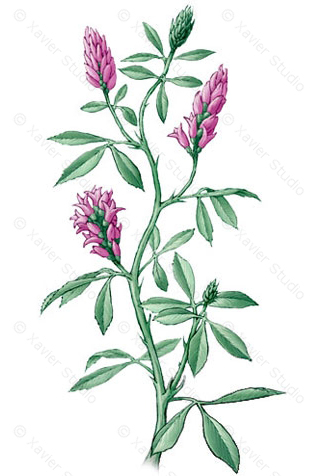 Alfalfa is helpful for chronic joint inflammation and aiding female hormonal balance. It comforts and strengthens the immune system. Alfalfa is rich in vitamins, minerals and other nutrients that play an important role in the maintenance of a healthy body. It contains protein, vitamin A, vitamin B1, vitamin B6, vitamin C, vitamin E, and vitamin K. It also contains calcium, potassium, carotene, iron and zinc and is considered one of the healthiest plant foods, providing an excellent range of nutritive properties for good health and well being.
Alfalfa is helpful for chronic joint inflammation and aiding female hormonal balance. It comforts and strengthens the immune system. Alfalfa is rich in vitamins, minerals and other nutrients that play an important role in the maintenance of a healthy body. It contains protein, vitamin A, vitamin B1, vitamin B6, vitamin C, vitamin E, and vitamin K. It also contains calcium, potassium, carotene, iron and zinc and is considered one of the healthiest plant foods, providing an excellent range of nutritive properties for good health and well being.
Interestingly, alfalfa is a treatment hay fever. Externally the seeds can be made into a poultice for boils, to soothe insect bites, and reduce inflammation. It alkalizes and detoxifies the body. Binds carcinogens in the colon to help speed up their elimination from the body.It is an overall tonic for general health, fatigue, weight gain, and debility. Alfalfa also stimulates the growth of supportive connective tissue, and is useful in the treatment of diabetes.
Alfalfa is a herb rich in protein and the vitamins A, D, E and K. The leaves contain eight of the essential amino acids.Such a a nutrient-rich formula, can be used to replenish the body with vitamins and minerals. It is specifically indicated for those with poor diets and inadequate nutrient intake.
Daily Dosages:
In addition to alfalfa sprouts found in most supermarkets, alfalfa is available as a dried leaf herb, in tablets, capsules, and powders.
- 2 to 3 cups tea
- 2 to 4 grams in capsules or pills 3 times a day
- 6 to 12 grams powder
- 3 ounces sprouts
To make tea, steep 1 tablespoon seed or 2 ounces dried leaf in 1 quart boiling water. In powder form, the pleasant taste of alfalfa is a welcome addition to soups and salads.
For high cholesterol: a typical dose is 5 to 10 grams of the herb, or as a steeped strained tea, three times a day. 5 to 10 mL of a liquid extract (1:1 in 25% alcohol) three times a day has also been used.
Herbal Combinations:
To get more natural vitamins, combine Alfafa with herbs such as Nettle and Rosehip, Nettle is high in both vitamin C and Iron, thus ensuring that energy levels and prevention of cellular damage is assisted. Nettles acts as a blood tonic with the ability to strengthen the body’s natural resistance. Rosehip is also extremely high in vitamin C and is one of the best herbs used for its antioxidant action on the body. It also assists with maintaining healthy collagen.
Cosmetic Uses:
Alfalfa extract (Medicago Sativum Extract) can be an antioxidant in skin-care products, it is said this extract is a great source of protein, minerals and vitamins C,D,E,K for the skin. Conditions and increases skin metabolism to promote skin healing,used as a topical skin conditioner.Alfalfa Extract is primarily used in manufacture of natural face masks and lotions. Saponins in alfalfa extract acts as natural foaming agent. Boots, Clarins and Lancome are using alfalfa extract in their skincare products. Continue reading
Bilberry
- Scientific Name: Vaccinium myrtillus
- Plant Family: N.O. Vacciniaceae
- Parts Used: The ripe fruit. The leaves.
- Actions: astringent, diuretic, tonic, antiseptic,antibacterial
Varieties:
- V. arboreum, or Farkleberry. This is the most astringent variety, and both berries and root-bark may be used internally for diarrhoea, chronic dysentery, etc. The infusion is valuable as a local application in sore throat, chronic ophthalmia, leucorrhoea, etc.
- V. resinosum, V. damusum, and V. gorymbosum have properties resembling those of V. myrtillus.
- The Bog Bilberry ( V. uliginosum) is a smaller, less erect plant, with round stems and untoothed leaves, greyish green beneath. Both flowers and berries are smaller than those of the common Bilberry. This kind is quite absent in the south and only to be found in mountain bogs and moist copses, in Scotland, Durham and Westmorland.
- The ‘Huckleberry’ of North America, so widely appreciated there, is our Bilberry – the name being an obvious corruption of ‘Whortleberry.’
Constituents: The leaves contain glucoquinones, which reduce the levels of sugar in the blood. The skin of the fruits contains anthocyanin and is specific in the treatment of hemeralopia (day-blindness). The fruit is a rich source of anthocyanosides, which have been shown experimentally to dilate the blood vessels.
The Basics:
Although often called huckleberry, the bilberry is more nearly related to the cranberry. Vaccinium myrtillus has been used for nearly 1,000 years in traditional European medicine. Bilberry fruits have been used in the traditional Austrian medicine internally (directly or as tea or liqueur) for treatment of disorders of the gastrointestinal tract and diabetes. Herbal supplements of V. myrtillus (bilberry) on the market are used for circulatory problems, as vision aids, and to treat diarrhea and other conditions.
Bilberry is a well-known folk remedy for poor vision, especially for people who suffer from “night blindness,” that is, they have difficulty seeing in the dark. In fact, bilberry jam was given to Royal Air Force pilots who flew nighttime missions during World War II. It works by accelerating the regeneration of retinol purple, commonly known as visual purple, a substance that is required for good eyesight. European medical journals are filled with studies confirming bilberry’s positive effect on vision. Unfortunately, this herb has not received the attention it deserves in the American medical community so far.
Some people use bilberry for conditions of the heart and blood vessels including hardening of the arteries (atherosclerosis), varicose veins, decreased blood flow in the veins, and chest pain. Bilberry is also used for chronic fatigue syndrome (CFS), hemorrhoids, diabetes, osteoarthritis, gout, skin infections, gastrointestinal (GI) disorders, kidney disease, and urinary tract infections (UTIs).
The dried leaves of bilberries are used in the treatment of a variety of complaints. A tea made from the dried leaves is strongly astringent, diuretic, tonic and an antiseptic for the urinary tract. It is also a remedy for diabetes if taken for a prolonged period. Another report says that the leaves can be helpful in pre-diabetic states but that they are not an alternative to conventional treatment. The leaves contain glucoquinones, which reduce the levels of sugar in the blood.
A decoction of the leaves or bark is applied locally in the treatment of ulcers and in ulceration of the mouth and throat. It is sometimes applied directly to the inside of the mouth for mild mouth and throat soreness. A distilled water made from the leaves is an excellent eyewash for soothing inflamed or sore eyes.
Whilst the fresh fruit has a slightly laxative effect upon the body, when dried it is astringent and is commonly used in the treatment of diarrhea etc. The dried fruit is also antibacterial and a decoction is useful for treating diarrhea in children. The skin of the fruits contains anthocyanin and is specific in the treatment of hemeralopia (day-blindness). The fruit is a rich source of anthocyanosides, which have been shown experimentally to dilate the blood vessels, this makes it a potentially valuable treatment for varicose veins, hemorrhoids and capillary fragility.
How does it work?
Bilberry contains chemicals called tannins that can help improve diarrhea, as well as mouth and throat irritation, by reducing swelling (inflammation). There is some evidence that the chemicals found in bilberry leaves can help lower blood sugar and cholesterol levels. Some researchers think that chemicals called flavonoids in bilberry leaf might also improve circulation in people with diabetes. Circulation problems can harm the retina of the eye. Continue reading
Rennie Luttrull: queen-annes-lace-seeds
Rosanna: Spignel aka Bald Money
Annamarie Squatrito: Fumitory
EILEEN Klinghagen: Pumpkin
Mahmudul Hasan: Celery
